The success of the Semovente M40 da 75/18 caused Italian command to order «the same one, but bigger». The result of that request was the Semovente M43 da 105/25, which was nicknamed Basotto (Dachshund in English).
In April of 1942, soon after the combat debut of the Semovente M40 da 75/18 in North Africa, the Inspectorate of Artillery of the Royal Italian Army ordered the creation of a more powerful SPG, armed with a 105 mm gun. In response, the Odero-Terni-Orlando conglomerate (commonly known as OTO) proposed the creation of an SPG on the P26/40 (P40) tank platform. This vehicle was classified as a heavy tank in Italy, but was in reality a medium tank, as it weighed 26 tons. The chassis could allow for a well protected and mobile SPG, but there was an issue: the P26/40 was still in the prototype stage, and there was no concrete timeline for when it would go into production. Using the chassis of the best Italian tank to build secondary vehicles was also considered a waste.
The proposal of the Ansaldo company to use a modified M15/42 tank chassis seemed much more reasonable. This would result in a lighter vehicle (about 25-30% lighter), which meant that a smaller gasoline engine could be used. Italy was already feeling a shortage of diesel fuel, but gasoline was more plentiful. Other arguments included smaller dimensions of the resulting SPG, which would make it easier to conceal on the battlefield, as well as the use of existing components for production, which meant that production of the vehicle could begin faster.
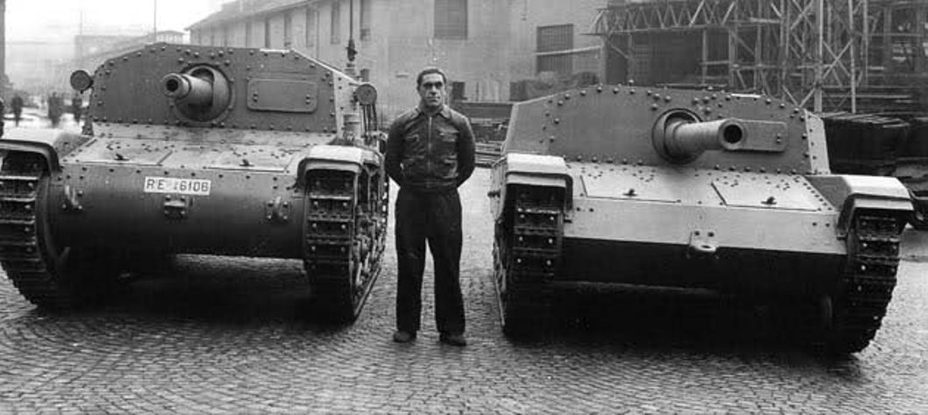
Design
A modified variant of a new 105 mm field howitzer that was developed since 1938 and had not yet entered production in 1942 was chosen. The specific type of weapon is still debated. Two companies built guns within the scope of the 1938 program: Ansaldo (20 caliber barrel) and OTO (23 caliber barrel). Most sources say that the Ansaldo weapon with a 23 caliber barrel was used, but there was simply no such gun. In addition, the Ansaldo design lost out to OTO. It's unlikely that the military would use the inferior weapon, and so the OTO howitzer was the likelier choice. When the howitzer was converted for use in the SPG, the barrel was extended to 25 calibers. This was possibly a way to compensate for the increase in range, as the maximum elevation in the casemate was only 22 degrees.
A prototype of the gun was ready by January 16th, 1943. Only 12 days later, on January 26th, the first vehicle named Semovente da 105/25 su scafo M42 allargato (105/25 SPG on a widened M42 chassis) was completed. The width of the SPG increased from 223 to 240 cm compared to the size of the standard M15/42 chassis. The SPG was «flatter», as the height decreased by 10 cm compared to the Semovente M42 da 75/18. The overall layout did not change. Instead of a turret, the SPG had an immobile casemate. The thickness of the front hull armour was 50 mm, the front of the casemate was 70 mm thick, and the sides were 45 mm thick. The hull was assembled using the archaic method of bolts and rivets. The suspension bogeys were equally antiquated. They did not permit the vehicle to move quickly, but resulted in a smooth ride at low speeds.
The howitzer was installed in a ball mount in the center of the hull, like on the 75 mm SPGs. The vertical range was from −12 to +22 degrees, horizontal range was from 16 degrees to the left to 18 degrees to the right. The SPG carried 48 rounds. The maximum range was only 4540 meters (at a muzzle velocity of 510 m/s), but for a close support SPG this was enough. In addition to HE rounds, the SPG carried HEAT ammunition. The effective range of the HEAT shell was 1000 meters, and the penetration was 76 mm, enough to penetrate a Sherman's hull.
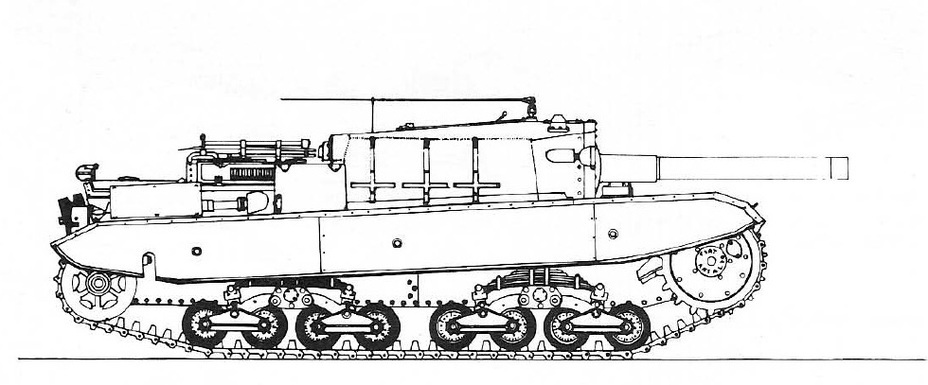
The auxiliary armament of the SPG consisted of the 8 mm Breda mod. 38 machinegun with 864 rounds of ammunition. Like on the Semovente M42 da 75/18, the machinegun was carried inside the fighting compartment and could be installed on a pintle mount on the roof. The machinegun could be used in an anti-aircraft role.
The Semovente da 105/25 was unique, in a way. It was the only vehicle used in WWII with a 105 mm gun that was crewed by only three men. This forced the crew to combine duties. The driver also worked the radio (Magneti Marelli RF 1 CA), the commander was also the gunner, and only the loader performed just one job. Some sources say that the Germans increased the number of crewmen in this vehicle to four, freeing the commander from other tasks even at the cost of reducing the amount of ammunition carried.
The SPG was powered by a V-8 Fiat SPA 15TB liquid cooled gasoline engine. The gearbox provided five gears forward and one in reverse.
Production and service
Trials took less than a month. On February 25th, 1943, the army ordered the first batch of production SPGs, indexed Semovente da 105/25 su scafo M43, or Semovente М43 da 105/25 for short. The first vehicles were delivered in early May, and the entire batch was ready by June 30th. Meanwhile, Ansaldo received the new contracts, which extended the total production run of the Semovente M43 da 105/25 to the colossal (for the Italian tank industry, at least) amount of 454 units. Due to the surrender of Italy and the occupation of its northern part by Germany, production continued for new masters. The Ansaldo factory in Genoa produced 24 vehicles in 1943 and 67 in 1944. The total amount of Semovente M43 da 105/25 built was 121 units.
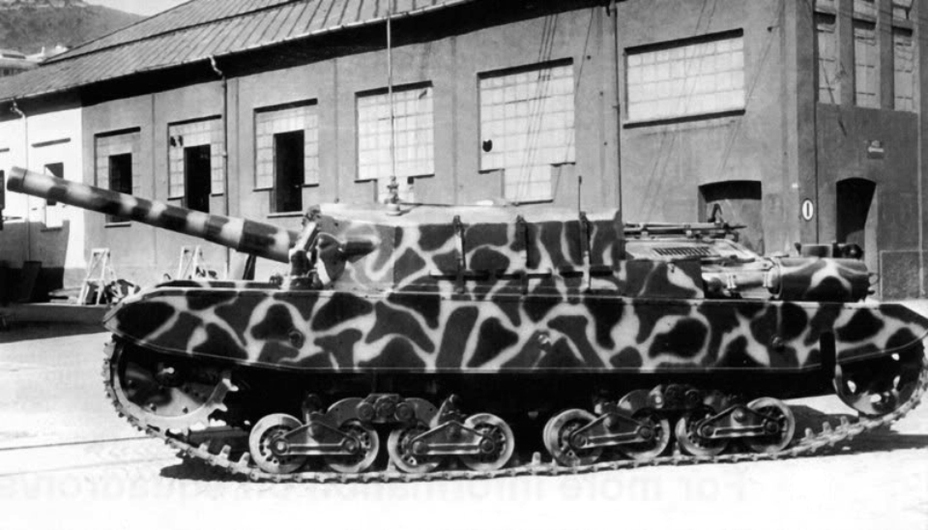
The first and only units of the Italian army that received the Semovente M43 da 105/25 were the 601st and 602nd Semoventi groups. Each group was supposed to consist of three 4-gun batteries and contain a total of 12 SPGs and 3 Carro Comando M42 command tanks. However, only the first unit received a full complement of SPGs. The 602nd group had only five Semovente M43 da 105/25 at the time of surrender.
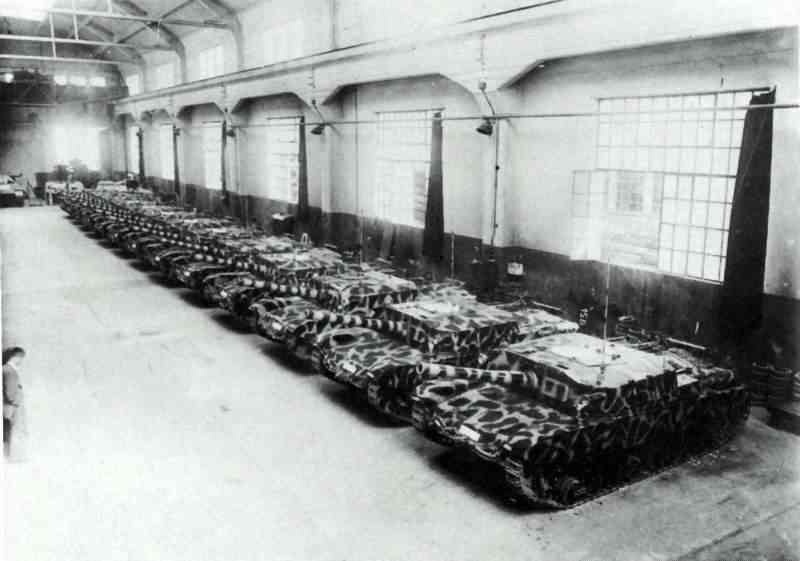
Both groups were designated for tank divisions that were being rebuilt after the defeat in North Africa. Like with the Semovente da 75/18 groups, they were included in divisional artillery. The 601st group was included in the 235th Artillery Regiment of the 135th Tank Division «Ariete II», and the 602nd was attached to the 1st Tank Division «M» («Blackshirts», 136th Tank Division «Centauro II» after August 15th, 1943, after being reassigned to the Royal Army). The career of the Semovente M43 da 105/25 in the Royal Army was short. both divisions, combined into a tank-motorized corps, attempted to resist the German forces near Rome on September 9-10th, but fruitlessly. The divisions were defeated, and the surviving vehicles (including Semovente M43 da 105/25) became German trophies. After that, the Semovente M43 da 105/25 were used very rarely by Italian forces. Only one SPG of this type is known to have served in the «Leoncello» battalion, which was formed in September of 1944 in the Italian Social Republic.
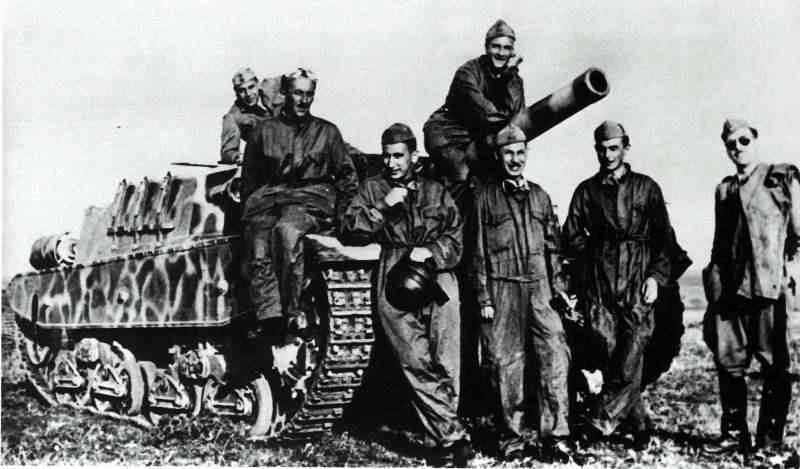
Serving new masters
In the Wehrmacht, the Semovente M43 da 105/25 was named Sturmgeschütz M43 mit 105/25 853(i), and was considered a suitable «local substitute» for assault guns. In addition to 105 mm SPGs captured in September of 1943, production continued for the Germans. The Wehrmacht also obtained new SPGs based on the Semovente M43 da 105/25, but equipped with long-barreled 75 mm guns, in an attempt to increase the anti-tank performance of assault artillery. The Germans created two variants with this armament. The first prototype was produced before Italy's surrender, but mass production began after the occupation. The Semovente M43 da 75/34 was armed with a 75 mm L/34 gun, like on the Semovente M42 da 75/34 (the latter was built on the «narrow» chassis). 29 of these SPGs were built for the Wehrmacht, which were named StuG M43 mit 75/34 851(i).
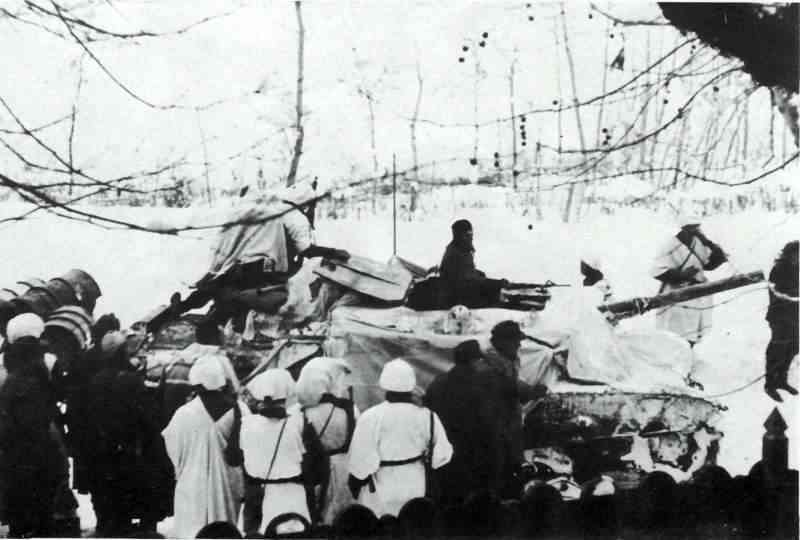
Pignato N. Semovente da 105/25 su scarfo M43 // Bellona. – 1974. – №36
The other variant was armed with the Cannone da 75/46 C.A. mod. 40 AA gun, with a barrel length of 46 calibers. Its 6.5 kg armour piercing shell had a muzzle velocity of 750 m/s, and could penetrate 90 mm of armour at 500 meters. The maximum range of the gun was over 13 km, and 43 rounds of ammunition were carried on board. In addition, the armour of the SPG was improved: the front armour was 100mm thick. The Germans produced only 11 such SPGs (8 in 1943 and 3 in 1944) under the name StuG M43 mit 75/46 852(i). Sources also use the Italian names Semovente М43 da 75/46 or Semovente М43 da 75/46T («Tedesco», Germany), but those likely appeared only after the war.
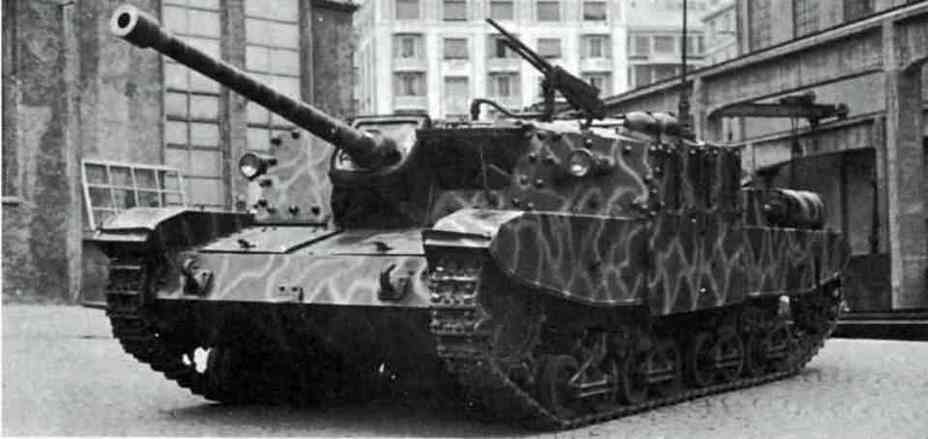
As of December 31st, 1943, there were 27 StuG M43 853(i) SPGs in the German army, and 66 a year later. The first Wehrmacht units to receive the StuG M43 853(i) in the fall of 1943 were the 15th Panzergrenadier and 26th Tank Divisions. All of these SPGs were lost in the winter of 1943-44, and were refilled with German vehicles. Italian StuGs were chiefly sent to infantry divisions. The exception was the 914th Assault Gun Brigade, which was equipped with a full complement of 31 StuG M43 853(i). Even this unit changed over to StuG 40 and StuH 42 SPGs by the end of the year. Some amount of StuG M43 853(i) and other types of Italian SPGs ended up in the 11th Parachute Assault Gun Battalion.
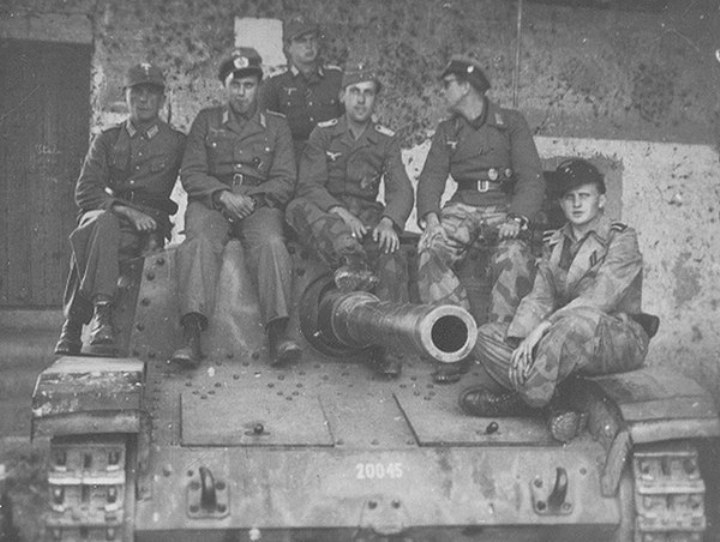
In addition to the aforementioned addition of a fourth crew member, the Germans often replaced the Breda with a standard MG-42 machinegun. It is also known that some of the 105/25 guns meant for SPGs were instead used in the Goth Line in Northern Italy.
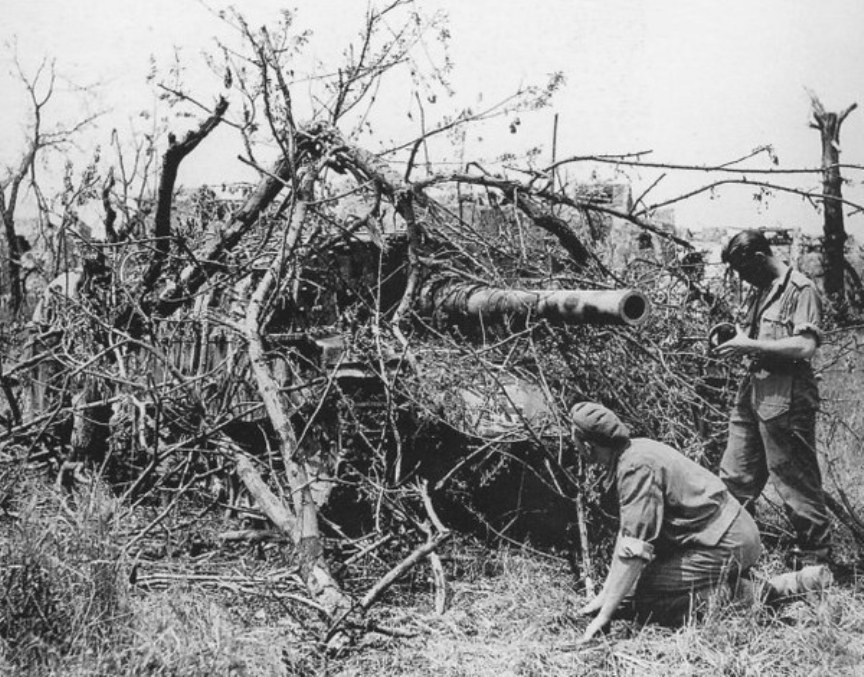
The Semovente M43 da 105/25 can be confidently called the best Italian SPG of WWII. The vehicle had a powerful cannon, decent armour, and satisfactory mobility. However, the overloading of the commander with duties is bound to have reflected negatively on its performance in combat.
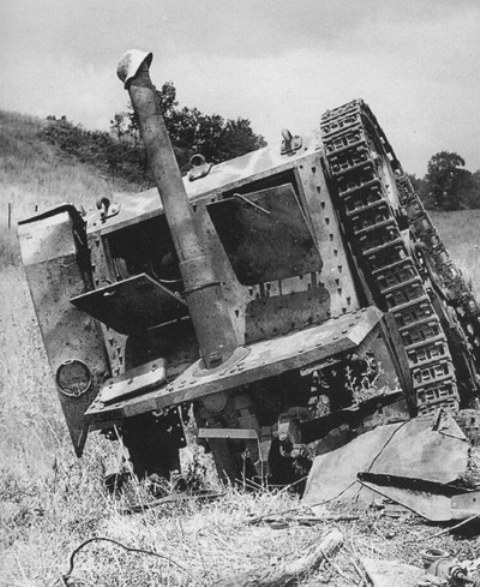
The Semovente М43 da 105/25 may well be called the best Italian self-propelled gun during the Second World War. The vehicle had powerful armament, good armor, and its mobility should be considered satisfactory. However, due to the limited composition of the crew, the vehicle commander was overloaded with functions, which inevitably affected the effectiveness of the self-propelled gun in battle.







